Lake Nyos: Gov’t Updates Rehabilitation Programme
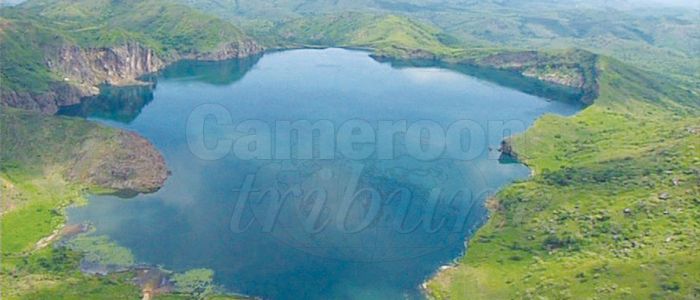
Crisis committee has validatedthe new programme which features more actions and a donor’s round table to mobilise additional funds.
Additional funding and updated actions to speed up the work of the National Programme to secure and rehabilitate Lake Nyos was topical on July 11, 2017 in Wum, Menchum Division. In effect, 31 years after the killer Lake Nyos, Mechum Division claimed the lives of some 1,800 people, work by the National Programme to secure and rehabilitate the Lake area for survivors to return to the land of their ancestors remains topical. Away from the degassing process which is about 90 percent completed and the reinforcement of the retention dam which is about 70 percent completed, delays in the execution of three other major components is evident. The rehabilitation of survivors and support to the production sector has delayed alongside the sustainable management of natural resources, environmental protection and improvement of structural infrastructure. Conceived to span three years from 2008-2010, the delay has not helped matters.
It is against this backdrop that the government has charted a new way forward. Prominent on the agenda is an updated programme that was examined and validated by the Menchum Divisional crisis committee on July 11th, 2017. Menchum SDO, Emvoutou Bita presided over the event after which the Director of Civil Protection, Risk prevention and management of disasters at the Ministry of Territorial Administration and Decentralization, YapMariatou told CT that the updated programme seeks to finalise the securement of Lake Nyos. The programme features a mechanism to continue degassing the lake, through a Deep Water Solar Energy pumping system, putting in place a permanent control mechanism to monitor trends in the lake and maintain surveillance equipment. It also proposed more holistic prevention plans instead of security a perimeter around Lake Nyos.
It also features actions to prepare the return of the survivors to Nyos, rehabilitation actions which includes, land allocation operations, support to persons who decide not to return, construction of new roads, rehabilitation of existing roads, reinforcement of bridges etc. It also emerged from the event in Wum that the 2017 work plan of the National Programme to secure and rehabilitate Lake Nyos focuses on the demarcation and marking out of the security zone around Lake Nyos, support for the rehabilitation of school infrastructure, provision of inputs and agro-pastoral materials etc.
Yap Mariatou: “Need to Align With Existing Realities”
Coordinator National Programme to secure and rehabilitate Lake Nyos.
What motivated the review of the programme to secure and rehabilitate Lake Nyos?
The Lake Nyos disaster remains the worst ever in the history of Cameroon and the government’s National Programme to secure and rehabilitate the Lake area is a response to check any future gas explosion and any risk linked with the collapse of the retention dam. Survivors were also resettled in some seven camps spread over Menchum and Boyo Divisions. The survivors continue to dream towards the return to their land and it has been the commitment of the government and its partners to work towards acceptable conditions before their return. This is to avoid a situation where they will be exposed to other risks if they are allowed to return in disorder. It is against this backdrop that the degassing process was accelerated with more pipes planted and a system to alert of any threats. The lake area also features some risks of floods when the rains are heavy and the population needs to be sensitized and trained on how to respond to such disasters.
How far has the programme gone in the execution of conceived respective components?
Perhaps; I should say that the first component which had to do with the securement of the lake’s site has been achieved and survivors could return to Nyos but not before, the security perimeter has been planted or marked out. It is necessary to have this aspect achieved to distinguish, risk areas from farming and settlement land. There will be need for the resettled population to carry out their activities in a biodiversity friendly manner and above all’ the need for the population to take ownership of preventive and operational actions while back in the land. Basic social facilities are also required before survivors can return to give them a chance in life without more problems. It is for this reason that we were in Wum to address some anthropological and socio-political issues that could arise from the return and rehabilitation of the displaced persons. It must be noted that times have changed since the disaster occurred and there is a need to update the programme to existing realities and facilitate the return of the survivors.
">
Crisis committee has validatedthe new programme which features more actions and a donor’s round table to mobilise additional funds.
Additional funding and updated actions to speed up the work of the National Programme to secure and rehabilitate Lake Nyos was topical on July 11, 2017 in Wum, Menchum Division. In effect, 31 years after the killer Lake Nyos, Mechum Division claimed the lives of some 1,800 people, work by the National Programme to secure and rehabilitate the Lake area for survivors to return to the land of their ancestors remains topical. Away from the degassing process which is about 90 percent completed and the reinforcement of the retention dam which is about 70 percent completed, delays in the execution of three other major components is evident. The rehabilitation of survivors and support to the production sector has delayed alongside the sustainable management of natural resources, environmental protection and improvement of structural infrastructure. Conceived to span three years from 2008-2010, the delay has not helped matters.
It is against this backdrop that the government has charted a new way forward. Prominent on the agenda is an updated programme that was examined and validated by the Menchum Divisional crisis committee on July 11th, 2017. Menchum SDO, Emvoutou Bita presided over the event after which the Director of Civil Protection, Risk prevention and management of disasters at the Ministry of Territorial Administration and Decentralization, YapMariatou told CT that the updated programme seeks to finalise the securement of Lake Nyos. The programme features a mechanism to continue degassing the lake, through a Deep Water Solar Energy pumping system, putting in place a permanent control mechanism to monitor trends in the lake and maintain surveillance equipment. It also proposed more holistic prevention plans instead of security a perimeter around Lake Nyos.
It also features actions to prepare the return of the survivors to Nyos, rehabilitation actions which includes, land allocation operations, support to persons who decide not to return, construction of new roads, rehabilitation of existing roads, reinforcement of bridges etc. It also emerged from the event in Wum that the 2017 work plan of the National Programme to secure and rehabilitate Lake Nyos focuses on the demarcation and marking out of the security zone around Lake Nyos, support for the rehabilitation of school infrastructure, provision of inputs and agro-pastoral materials etc.
Yap Mariatou: “Need to Align With Existing Realities”
Coordinator National Programme to secure and rehabilitate Lake Nyos.
What motivated the review of the programme to secure and rehabilitate Lake Nyos?
The Lake Nyos disaster remains the worst ever in the history of Cameroon and the government’s National Programme to secure and rehabilitate the Lake area is a response to check any future gas explosion and any risk linked with the collapse of the retention dam. Survivors were also resettled in some seven camps spread over Menchum and Boyo Divisions. The survivors continue to dream towards the return to their land and it has been the commitment of the government and its partners to work towards acceptable conditions before their return. This is to avoid a situation where they will be exposed to other risks if they are allowed to return in disorder. It is against this backdrop that the degassing process was accelerated with more pipes planted and a system to alert of any threats. The lake area also features some risks of floods when the rains are heavy and the population needs to be sensitized and trained on how to respond to such disasters.
How far has the programme gone in the execution of conceived respective components?
Perhaps; I should say that the first component which had to do with the securement of the lake’s site has been achieved and survivors could return to Nyos but not before, the security perimeter has been planted or marked out. It is necessary to have this aspect achieved to distinguish, risk areas from farming and settlement land. There will be need for the resettled population to carry out their activities in a biodiversity friendly manner and above all’ the need for the population to take ownership of preventive and operational actions while back in the land. Basic social facilities are also required before survivors can return to give them a chance in life without more problems. It is for this reason that we were in Wum to address some anthropological and socio-political issues that could arise from the return and rehabilitation of the displaced persons. It must be noted that times have changed since the disaster occurred and there is a need to update the programme to existing realities and facilitate the return of the survivors.
">
Crisis committee has validatedthe new programme which features more actions and a donor’s round table to mobilise additional funds.
Additional funding and updated actions to speed up the work of the National Programme to secure and rehabilitate Lake Nyos was topical on July 11, 2017 in Wum, Menchum Division. In effect, 31 years after the killer Lake Nyos, Mechum Division claimed the lives of some 1,800 people, work by the National Programme to secure and rehabilitate the Lake area for survivors to return to the land of their ancestors remains topical. Away from the degassing process which is about 90 percent completed and the reinforcement of the retention dam which is about 70 percent completed, delays in the execution of three other major components is evident. The rehabilitation of survivors and support to the production sector has delayed alongside the sustainable management of natural resources, environmental protection and improvement of structural infrastructure. Conceived to span three years from 2008-2010, the delay has not helped matters.
It is against this backdrop that the government has charted a new way forward. Prominent on the agenda is an updated programme that was examined and validated by the Menchum Divisional crisis committee on July 11th, 2017. Menchum SDO, Emvoutou Bita presided over the event after which the Director of Civil Protection, Risk prevention and management of disasters at the Ministry of Territorial Administration and Decentralization, YapMariatou told CT that the updated programme seeks to finalise the securement of Lake Nyos. The programme features a mechanism to continue degassing the lake, through a Deep Water Solar Energy pumping system, putting in place a permanent control mechanism to monitor trends in the lake and maintain surveillance equipment. It also proposed more holistic prevention plans instead of security a perimeter around Lake Nyos.
It also features actions to prepare the return of the survivors to Nyos, rehabilitation actions which includes, land allocation operations, support to persons who decide not to return, construction of new roads, rehabilitation of existing roads, reinforcement of bridges etc. It also emerged from the event in Wum that the 2017 work plan of the National Programme to secure and rehabilitate Lake Nyos focuses on the demarcation and marking out of the security zone around Lake Nyos, support for the rehabilitation of school infrastructure, provision of inputs and agro-pastoral materials etc.
Yap Mariatou: “Need to Align With Existing Realities”
Coordinator National Programme to secure and rehabilitate Lake Nyos.
What motivated the review of the programme to secure and rehabilitate Lake Nyos?
The Lake Nyos disaster remains the worst ever in the history of Cameroon and the government’s National Programme to secure and rehabilitate the Lake area is a response to check any future gas explosion and any risk linked with the collapse of the retention dam. Survivors were also resettled in some seven camps spread over Menchum and Boyo Divisions. The survivors continue to dream towards the ret...
Cet article complet est réservé aux abonnés
Déjà abonné ? Identifiez-vous >
Accédez en illimité à Cameroon Tribune Digital à partir de 26250 FCFA
Je M'abonne1 minute suffit pour vous abonner à Cameroon Tribune Digital !
- Votre numéro spécial cameroon-tribune en version numérique
- Des encarts
- Des appels d'offres exclusives
- D'avant-première (accès 24h avant la publication)
- Des éditions consultables sur tous supports (smartphone, tablettes, PC)



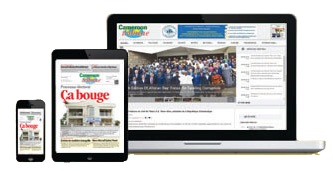



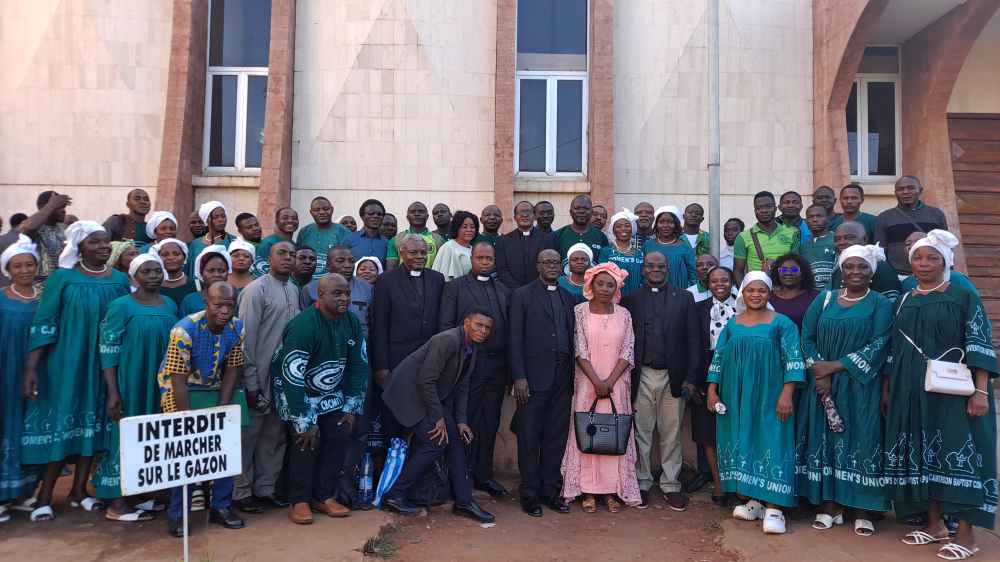
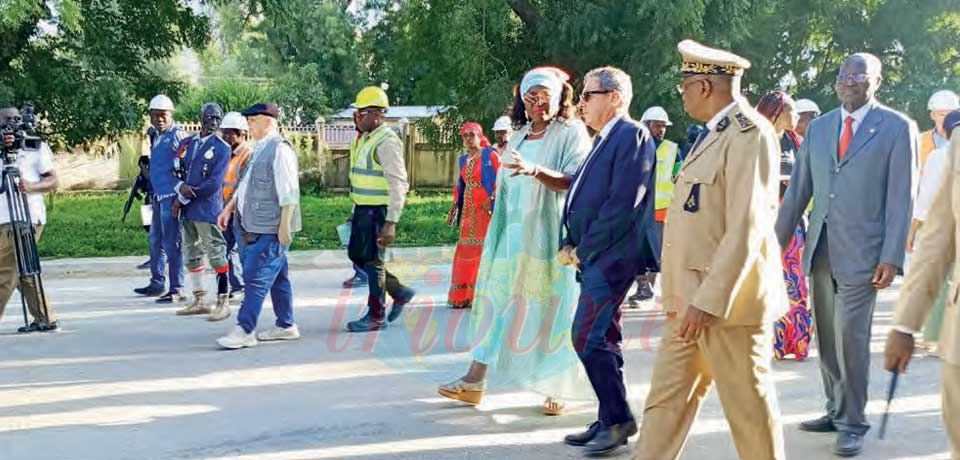
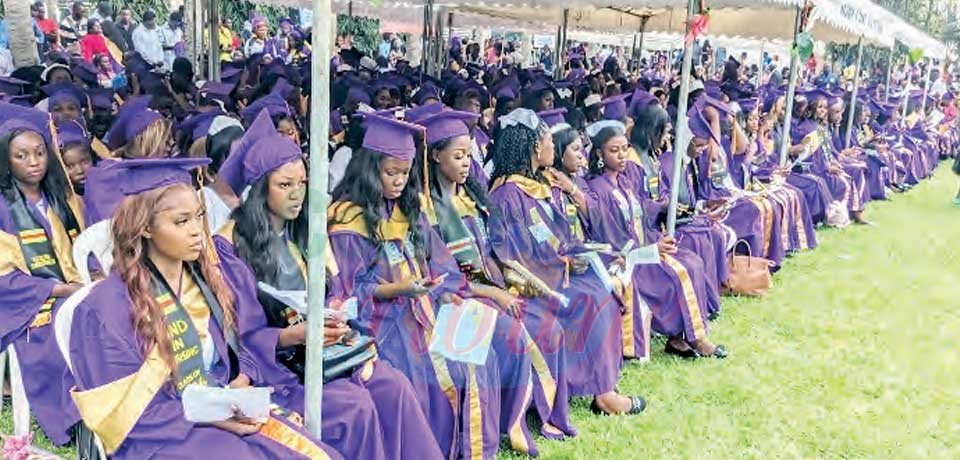
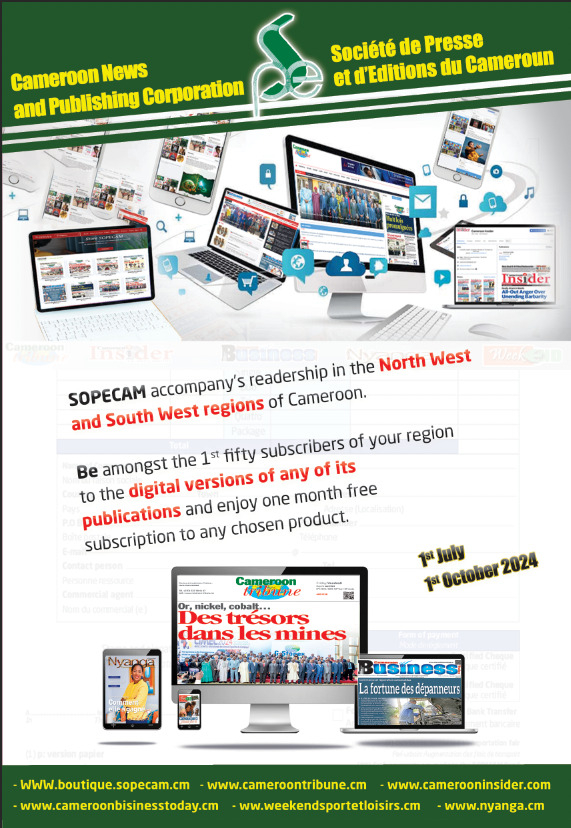
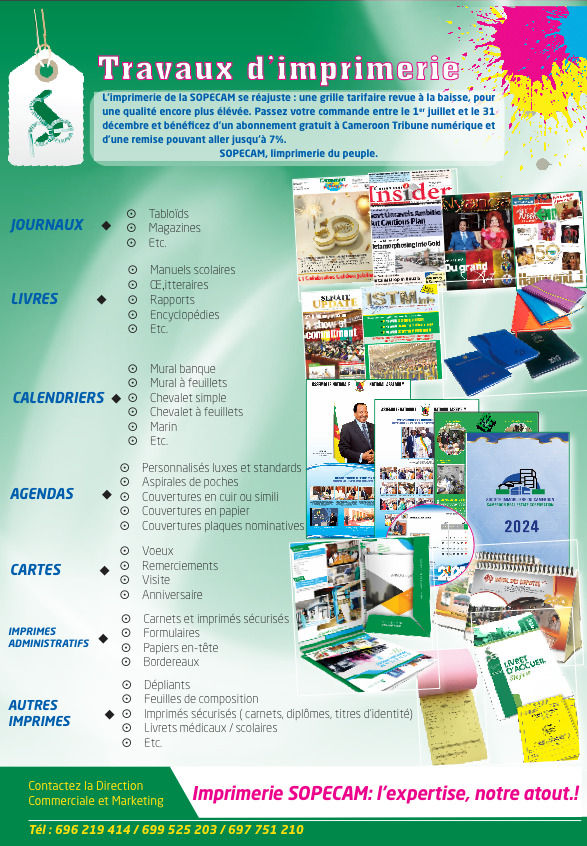
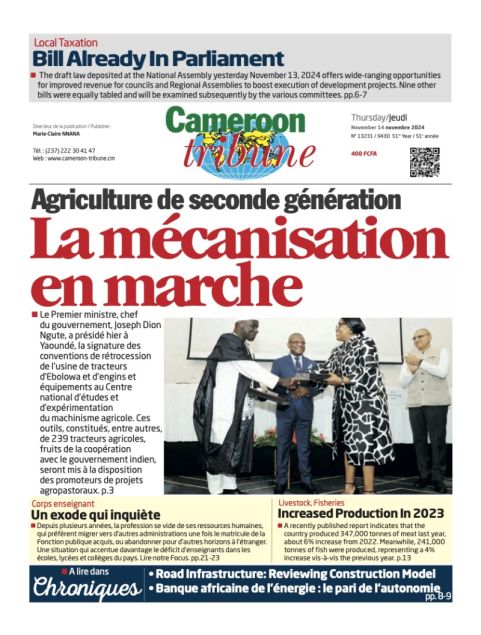




Commentaires